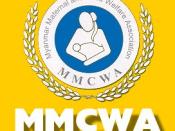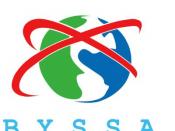Quality service is an important aspect of almost any organizations. Competency is even more essential when it deals with the affairs of other people's lives. The field of social service is a very good example of this idea. Social service involves interacting with groups of people in order to know their needs and aid them in attending to these. This includes assisting people who cannot sustain their basic needs like food, shelter, and healthcare. It also deals with other societal issues such as: family problems, child welfare, women rights, and many others. Nevertheless, the services rendered by organizations always have to be constantly assessed to assure that these are of quality. This is even more applicable during this rapidly changing time where almost everything is changing. Being the case, quality improvement service is a vital aspect in making sure that the objective or purpose of an organization is achieved. It is a way by which the service they give to the people are enhance and constantly gets better and it is also a good way by which problems could be identified and addressed.
In line with this, it is the purpose of this paper to discuss one method of quality improvement service that would be applicable in the field of social service. The specific model that will be focus on is the Quality Service Review (QSR). The succeeding paragraphs will discuss the structure of this model as well as its techniques for service improvement. Furthermore, the strengths and weaknesses of this model will also be given due consideration to fully understand it as a means of service improvement. Lastly, an analysis of its efficacy as a quality service improvement model will be done in order to give a sound recommendation on whether this model should be used or not.
Quality Service Review (QSR)Quality Service Review (QSR) is considered to be "a broad term of set of processes and tools designed to review human service systems" (Kershaw et. al, 2002, p. 2). This model is characterized by case reviews that deal with numerous and various stakeholders. It utilizes performance appraisal process in order to measure the benefits that people received from the service as well as the capability of the service system to attend to their needs. Furthermore, the popularity of this model in terms of enhancing quality service has been observable for over the past two decades in numerous social service systems (Kershaw et. al, 2002).
StructureThe formation of the Quality Service Review gives emphasis on small sample sizes in order to identify the patterns of behavior in a system. It operates in small target areas wherein the practices of a particular community can be assessed and changed. The approach of this model takes into consideration every individual at his or her particular context may it be his or her home or community. As such, it becomes possible for the QSR to analyze the situation and performance results in order to establish what is really happening to better understand the causes of the current situation (Kershaw et. al, 2002).
Moreover, the QSR is often organized in such a way that it allots due attention and importance to every stakeholder that is involved in a particular service system. By so doing, it could look at the development of every actor as well as the effectiveness of the service system. This is exemplified by a quality service report that was done by the Child and Family Services Agency (CFSA) wherein they arranged the QSR in four sections namely: Child Status, Parent/Caregiver Status, Progress Status, and System Status. Each section was examined in order to see the condition of all the people concern and also to measure the effectiveness of the child welfare service (Child and Family Services Agency, 2005).
Techniques for Service ImprovementQuality Service Review's means of improvement is grounded from the very idea that it focuses on small groups and gives importance to every stakeholder that is involved in the process. The main technique of this model is to acquire the necessary information regarding the condition of those individual who are concern in the system. This could be done through methods that allow interaction of the one who is giving the service and the people who receive it. The basic method that is implemented within a QSR is to create a dyad of reviewers in every case that needs to be reviewed. This could be exemplified in the child welfare system wherein there are two (dyad) assign persons in each child case that will conduct the assessment. The review is done through an interview. The more experienced person among the dyad will be the one responsible in asking the questions while on the other hand, the second person served as a "shadow". The purpose of the shadow is to give a secondary outlook regarding the interview it is also a chance by which he or she can learn how to conduct a proper interview. The interviews are scheduled around the target individual. For example, a child welfare system is the focus of the review. The dyad will interview the child, his of her biological parents, foster parents, teachers and other people who are concerned with his or her development. The goal of the review is not to dwell on the past but rather to examine the current condition of the child and determine the possible ways to improve the relationship of the child and the family. After all the interviews are done, the reviewer will rate the situation of the child based upon a list of elements that must be considered. The result of the ratings will be used to calculate the child/family status as well asthe system performance (Kershaw et. al, 2002). As such, the objective of QSR is to make an assessment of the service that is done in order to see how it could be further improve.
StrengthsThe most advantageous point of the Quality Service Review as compared with other models is its characteristic to engage and interact with the people involved in a much deeper level. Since QSR operates in small communities and groups it has the capability to properly interview the people involved and personally connect with them (Washington County Department of Social Services, 2006). Being the case, it is easier to know the root causes of the problems as well as the sentiments of the people involved. This makes it easier for the reviewer to identify the areas in their system that needs improvement.
Furthermore, stakeholders could be easily engaged to change or modify their practice through the persuasion that could take place in the interviews conducted (Tennessee Department of Children Services, n.d.). For example, the child welfare system could convinced the parents of the children to become more involved in the development of their child, which they can possible do in their face-to-face communication with them.
WeaknessesThe primary weakness of the Quality Service Review is found in the conducted interview. Due to the fact that the rating of a particular case that is being examined is highly dependent on the results of the interview done, it is essential that there is a comprehensive and substantial interview. However, there are cases wherein the questions are incompetently made because it does not cover all the important elements that are needed to for the reviewer to assess the situation of the focus individual. Moreover, there are also instances of calculation of the ratings derived from the interview (Kershaw et. al, 2002). This could be attributed to the lack of standard in the scoring process as well as the faults of the person who is conducting the process.
RecommendationQuality Service Review possesses the factors that are needed in order to implement service improvement especially in the field of social service. This model is very applicable in social service because it emphasizes the idea of giving the necessary attention and importance to the people involved in a certain service system. Such kind of principle is vital in social service because it deals in helping different kinds of people with regards to addressing their needs. QSR focuses in establishing a deeper and substantial relationship with the different stakeholders, which is why it is very applicable in social service. Nevertheless, caution must still be observed especially in terms of conducting the interview and assessing the ratings obtained from it. Since, social service revolves around the life of people, all reviews done should be taken properly in order to protect the welfare of these individuals.
ReferencesChild and Family Services Agency. (2005). Quality Service Review Report. RetrievedSeptember 20, 2008, from http://www.cfsa.dc.gov/cfsa/lib/cfsa/frames/pdf/ Spring2005PilotQSRReport.pdf.
Kershaw, M.A., Armstrong, M.I., Vargo, A., Styles, M.C., & Whitlock, A.R. (2002).
Quality Service Review (QSR) Field Test Report and Recommendations for Future Use.
Retrieved September 20, 2008, from http://www.dcf.state.fl.us/publications/docs/qsrplan_final.pdf.
Tennessee Department of Children's Services. (n.d.). Quality Services Reviews: A process forUnderstanding and promoting best child welfare practice. Retrieved September 20, 2008from, http://www.acy.org/upimages/Intro_to_QSR_for_New_Shadows.ppt.
Washington County Department of Social Services. (2005). Continuous Quality Improvement/Quality Service Review. Retrieved September 20, 2008, fromhttp://dcf.wisconsin.gov/cqireview/cqiReports/Washington05.pdf.


